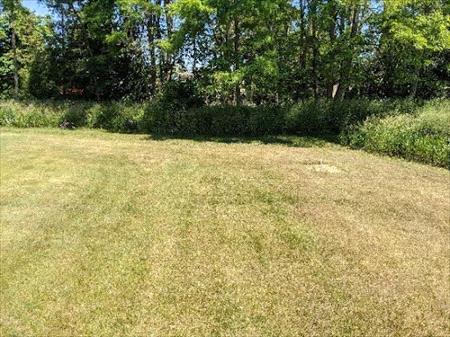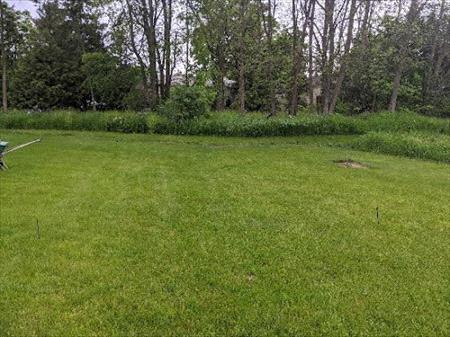Your Cart

Learn Your Lawn: Drought Stress
Request a Quote
Drought stress refers to the negative effects on a lawn when there is not enough water available for the grass to properly grow and thrive. This can cause the grass to turn brown and dormant, while also making it more susceptible to disease and pests. Drought stress can be caused by a variety of factors, including prolonged periods of hot and dry weather, poor irrigation practices, and soil that does not retain moisture well. Most lawns survive extended periods of drought by turning brown and going dormant. While the foliage is dead, the crowns and roots remain alive. Most healthy lawns can survive in a dormant state for 4 to 6 weeks without rainfall or irrigation. While dormancy is the lawn’s natural survival mechanism, many lawns are still at risk during dormancy, so a proper watering regimen is needed to help the lawn recover. To alleviate drought stress, make sure your lawn is getting enough water, either through regular watering or natural rainfall. You can also improve the soil's ability to retain moisture by adding organic matter, like lawn clippings. Proper mowing and fertilization will also help the lawn recover more quickly. These practices are especially important during the hot summer months. More details are provided here. Water Deeply: Deep and infrequent watering is essential for strong plant health and development. This encourages the roots to grow deeper, making them more resilient against drought and insect problems. Generally, your lawn should be watered for about 30 to 45 minutes in each area, 1 to 2 times per week, and preferably in the mornings between 5 and 9 a.m. Note that permanent damage can occur if your lawn goes more than 4 weeks without adequate water, which makes it essential that you maintain your regular watering schedule during this period. Raise Your Mowing Height: Raise your mowing height up to 3 ½ - 4 inches during the summer heat. The longer grass shades and cools the crowns of the turfgrass plant, which will help the lawn maintain its color and health. Much like watering, it is best to mow in the morning when possible. Make sure you keep the mower blade razor sharp, as dull blades tear and bruise the leaf tips and increase the chance of disease. Mulch: Mulching your lawn clippings can help to retain moisture in the soil and reduce evaporation. Fertilize Regularly: Regular applications of Weed Man’s specially formulated, slow-release granular fertilizer will help provide your lawn with adequate nutrients. Aerate: Aerating your lawn can improve soil drainage and alleviate soil compaction to allow water and nutrients to penetrate deeper into the soil. Once temperatures start to cool, the grass will begin to recover, emerge from summer dormancy, and continue to grow. WHAT IS DROUGHT STRESS IN MY LAWN?
HOW CAN I ALLEVIATE OR PREVENT DROUGHT STRESS IN MY LAWN?
 English (USA)
English (USA) Français (CANADA)
Français (CANADA)

